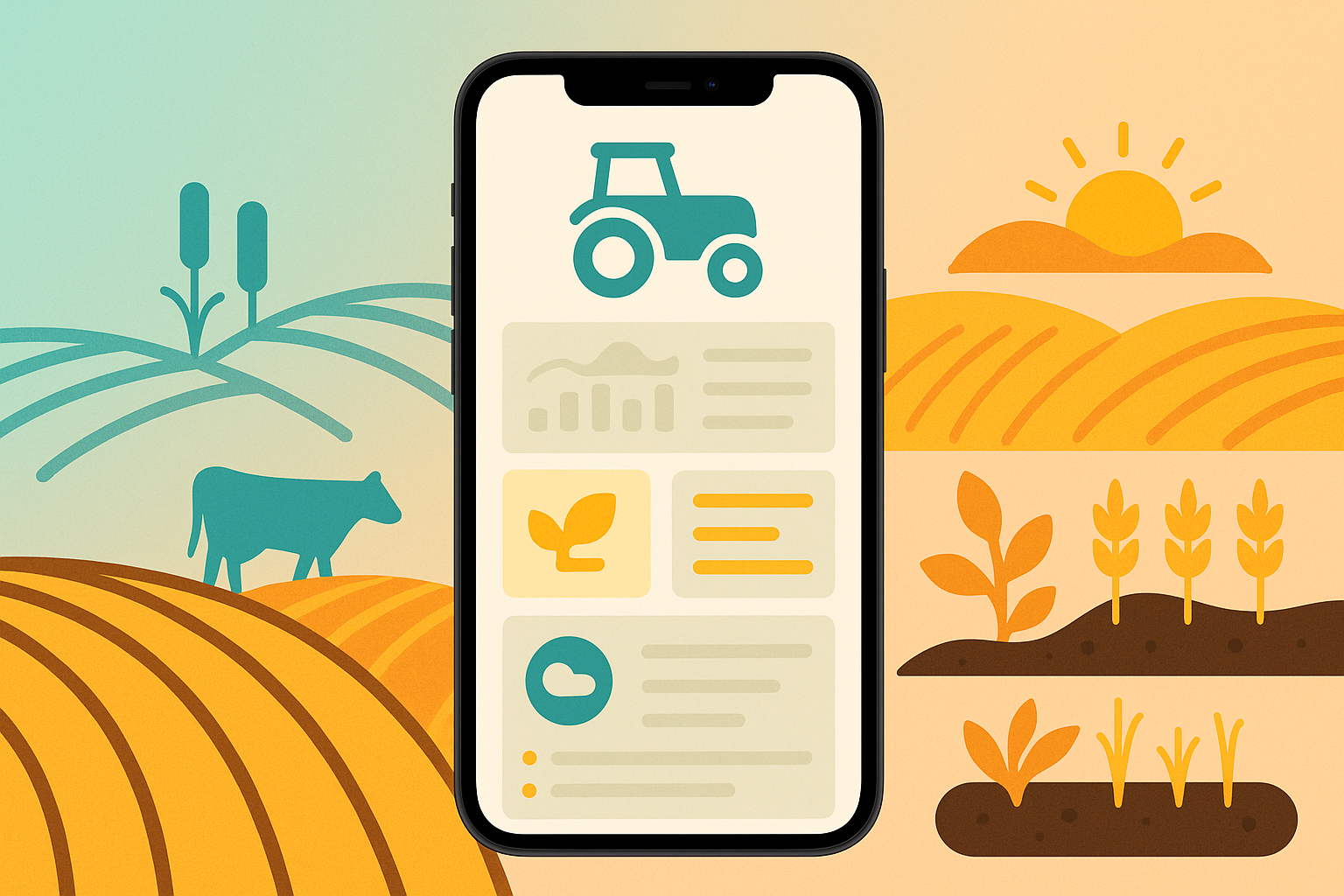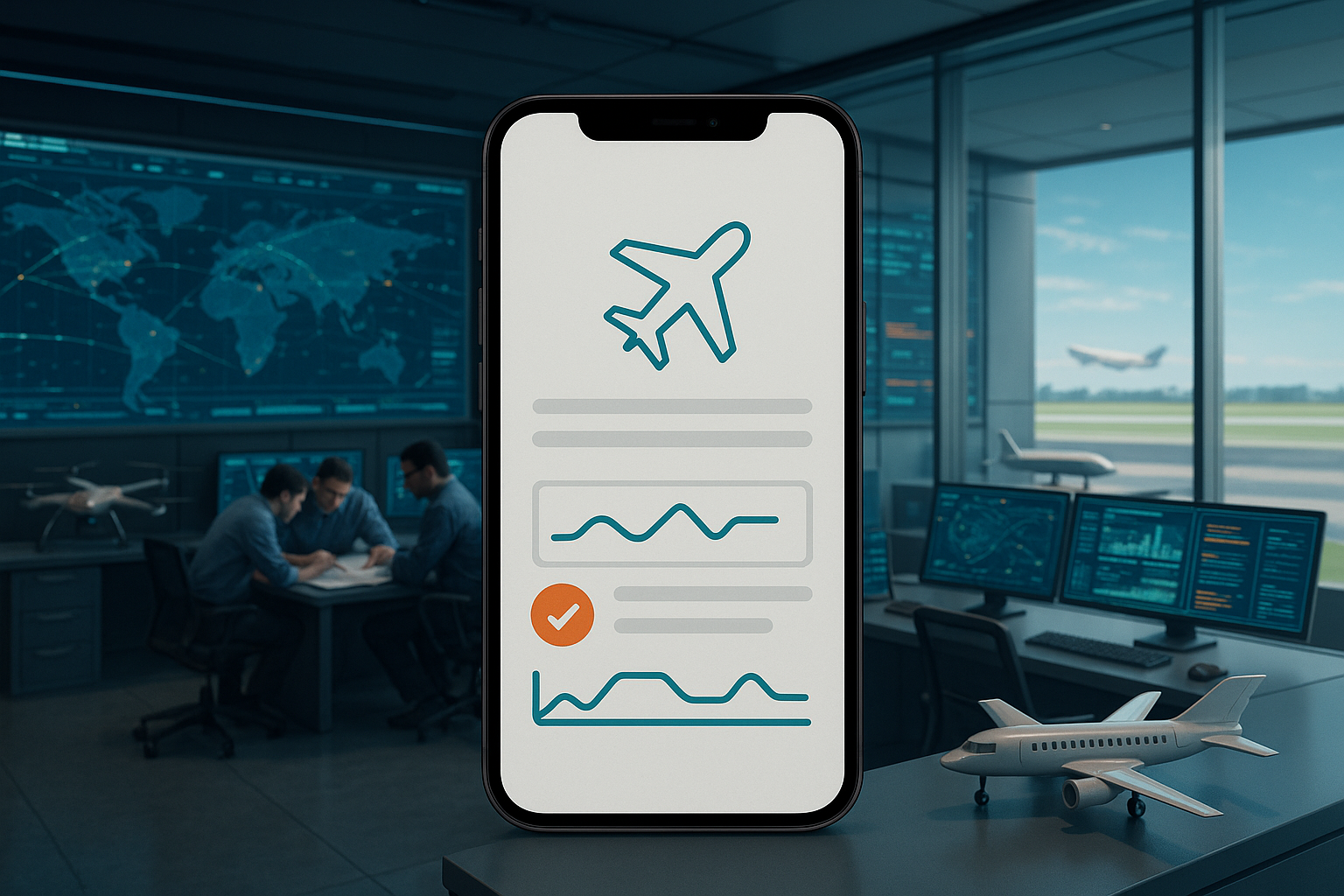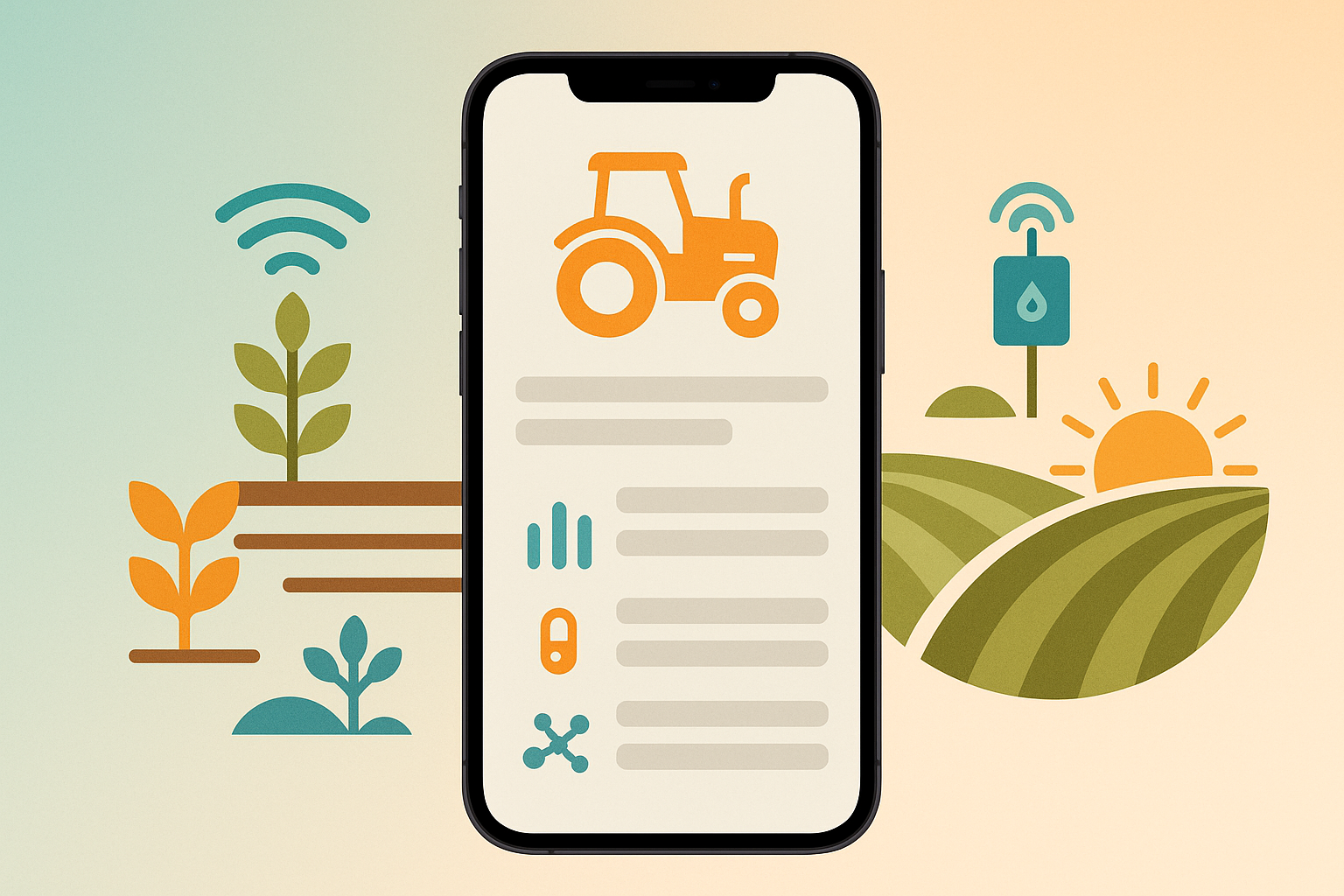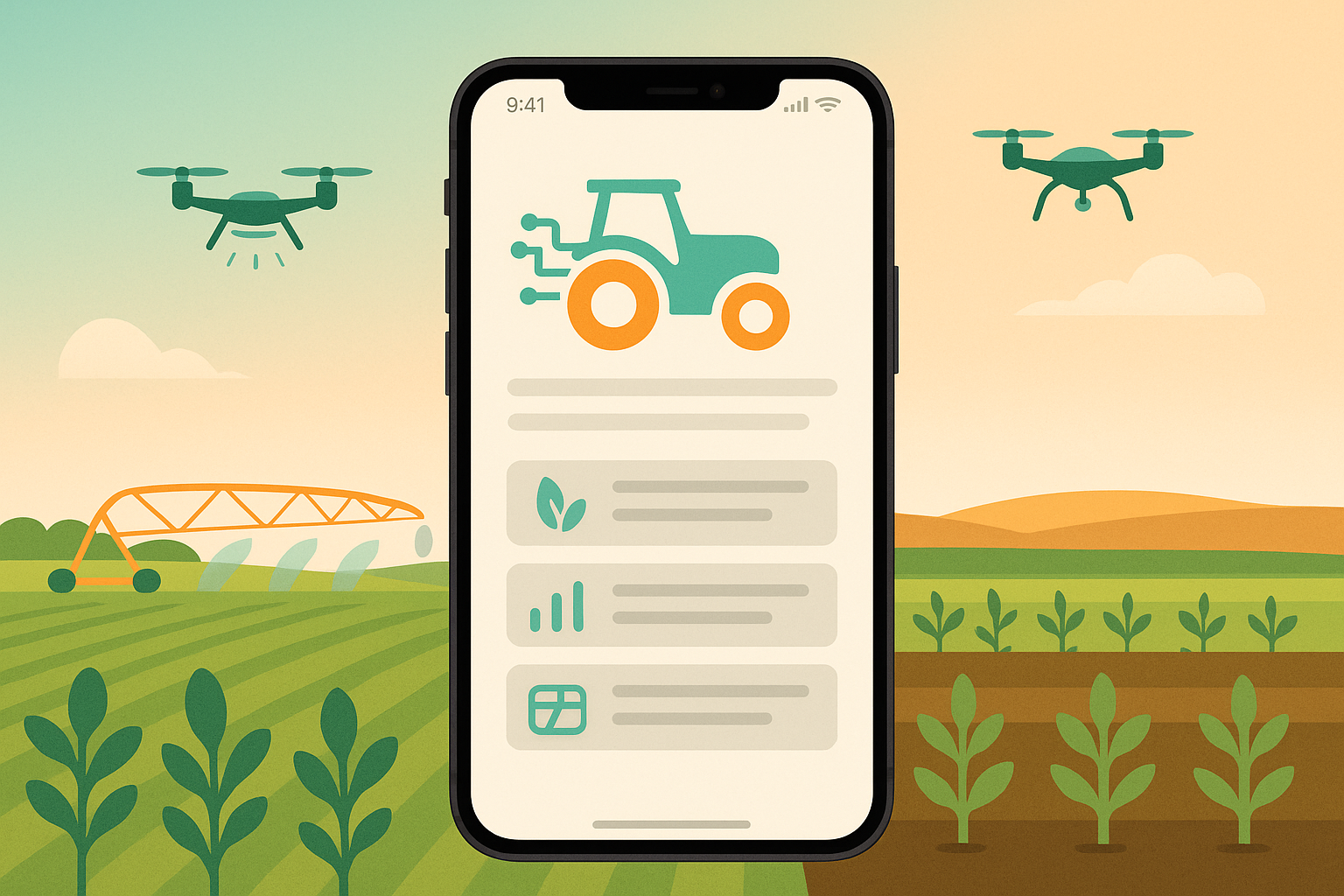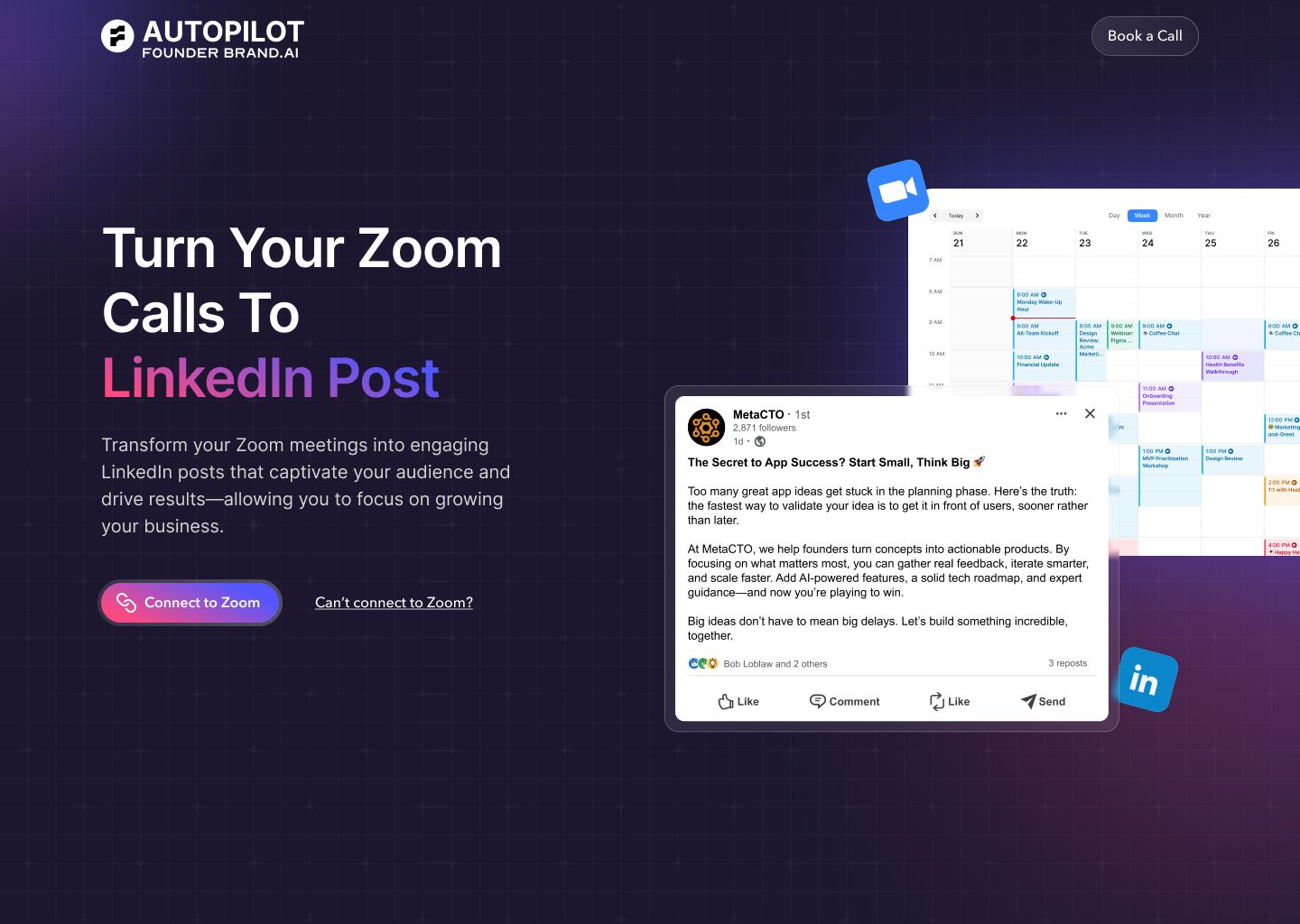Introduction
The agricultural landscape is undergoing a profound transformation, driven by technology that promises to feed a growing global population more efficiently and sustainably. At the heart of this revolution are agricultural mobile apps—powerful tools that place data-driven insights directly into the hands of farmers, agronomists, and agribusiness professionals. However, developing an agricultural app that is both powerful and user-friendly is a formidable challenge. These applications must process vast, complex datasets, integrate sophisticated technologies like artificial intelligence (AI), and deliver actionable recommendations in a simple, intuitive interface.
Attempting to build such a solution in-house often leads to unforeseen complexities, budget overruns, and a final product that fails to meet the real-world needs of its users. The specialized knowledge required—spanning agronomy, data science, and mobile engineering—is rarely found within a single organization.
This article serves as a comprehensive guide to agricultural app development. We will explore what defines a modern agricultural app, dissect the significant hurdles of in-house development, categorize the different types of apps available, and provide a clear-eyed look at development costs. Furthermore, we will introduce the leading companies in the AgTech software space, with a special focus on how we at MetaCTO, a top US AI-powered app development firm, can help you navigate this complex journey. Our expertise lies not just in building apps, but in strategically integrating cutting-edge AI to create solutions that solve real problems, drive profitability, and shape the future of farming.
What is an Agricultural App?
An agricultural app is a specialized software application designed for mobile devices that provides farmers, agronomists, and agricultural businesses with tools and information to optimize farming operations. Far from being simple digital logbooks, these apps are sophisticated ecosystems that integrate data from multiple sources—including sensors, drones, satellites, and machinery—to deliver comprehensive, actionable insights. The ultimate goal is to enhance productivity, improve sustainability, and increase profitability by enabling more informed, data-driven decision-making.
The capabilities of modern agricultural apps are vast and varied. They can transform a smartphone or tablet into a central command center for an entire farm. For instance, an app might provide:
- Real-time Field Monitoring: Apps like Orbit use satellite-based remote sensing and high-resolution imagery to monitor crop health in real-time, promptly identifying anomalies and problem areas.
- AI-Powered Analytics: The AGMRI app combines AI-driven analytics with high-resolution imagery to deliver season-long insights that identify and quantify yield-limiting issues, from emergence and weeds to crop stress and nutrient deficiencies.
- Precision Resource Management: The xarvio FIELD MANAGER provides field-zone specific variable application maps, allowing for the precise application of fungicides and fertilizers, thereby optimizing input usage and reducing waste.
- Data Integration and Management: The Climate FieldView app serves as an integrated digital agriculture tool, allowing users to seamlessly collect, store, and analyze critical field data to measure the impact of their agronomic decisions on crop performance.
At their core, these applications leverage advanced technologies to solve age-old agricultural challenges. AI and machine learning have become particularly instrumental, enabling the effective use of vast agricultural datasets. An AI-based app can provide customized crop advice based on historical harvest data, current weather conditions, and soil analysis. It can guide farmers on sustainable practices, identify the root causes of problems in-season, and even help plan for the next growing season. This infusion of intelligence has significantly improved agricultural apps, providing more accurate predictive analytics, personalized recommendations, and real-time data processing that empower users to manage their operations with unprecedented precision.
Reasons It Is Difficult to Develop an Agricultural App In-House
While the benefits of a custom agricultural app are clear, the path to building one is fraught with challenges, especially for organizations that attempt to go it alone. Developing a robust, scalable, and user-friendly AgTech solution requires a rare combination of agricultural domain expertise, advanced technical skill, and significant financial investment.
The Inherent Complexity of AgTech
New AgTech solutions are often complex and require specialized knowledge to operate effectively. An app must not only perform advanced calculations and data analysis but also present this information in a way that is user-friendly and easily adaptable. This is a significant hurdle; an app that is powerful but difficult to use will ultimately fail to gain traction with farmers and advisors in the field. The innovation must be intuitive to support broader adoption.
The Challenge of Data Management
Modern agricultural apps ingest, process, and analyze enormous volumes of diverse data. This includes everything from soil quality metrics and weather conditions to high-resolution imagery from drones and satellites. Managing this data infrastructure is technically demanding and can be quite expensive. Building the backend systems to handle this data flow, ensuring its accuracy, and developing the algorithms to interpret it requires a team of data scientists and engineers—a significant and costly undertaking for an in-house team.
The Necessity of Specialized Agronomic Knowledge
A successful agricultural app cannot be built by software developers alone. It requires a profound understanding of agronomy to ensure the features and recommendations are scientifically sound and practically useful. For example, the Taranis Ag Assistant app is powered by a generative AI model trained on proprietary agronomic data, university research reports, and industry-specific product studies. Replicating this depth of knowledge in-house is a massive challenge that requires access to agronomists and years of curated data, which most companies do not possess.
The High Cost of an In-House Team
Assembling a dedicated in-house team with the necessary skills is a major financial commitment. You would need to hire mobile app developers for both iOS and Android, backend engineers, UI/UX designers, data scientists, machine learning specialists, and quality assurance testers, not to mention an agricultural domain expert to guide the project. Outsourcing app development to an expert team can help save significant money and time compared to the high cost and lengthy process of individually hiring all these experts.
Integrating AI: The Ultimate Challenge
Integrating artificial intelligence is where many in-house projects falter. AI has become a cornerstone of modern AgTech, enabling features like predictive analytics, pest and disease detection, and autonomous decision-making. However, building and implementing AI is exceptionally difficult for several reasons:
- Data Requirements: AI models, particularly machine learning and deep learning, require vast amounts of high-quality, labeled data for training. Companies like Cropwise AI leverage over 20 years of weather history and 80,000 crop observations. Acquiring or creating such a dataset from scratch is a monumental task.
- Niche Expertise: AI development requires highly specialized talent in machine learning engineering and data science. These professionals are in high demand and are expensive to hire.
- Computational Power: Training complex AI models requires significant computational resources, adding another layer of expense and complexity.
- Continuous Improvement: An AI model is not a “set it and forget it” solution. It requires ongoing monitoring, retraining, and refinement to maintain its accuracy as new data becomes available.
This is where partnering with a specialized development agency like MetaCTO becomes a strategic advantage. We have over 20 years of app development experience and a dedicated team of experts who specialize in AI development. We understand the nuances of building and integrating sophisticated AI models, from data preparation and model training to deployment and maintenance. By leveraging our expertise, you can bypass the steep learning curve and immense cost of building an AI team from the ground up, allowing you to incorporate powerful, value-driving AI features into your app faster and more efficiently.
Different Types of Agricultural Apps
The agricultural app market is diverse, with solutions tailored to a wide range of needs. While many apps blend functionalities, they can generally be categorized into a few key types. Based on a comprehensive review of the market, the most common types are Precision Ag, Farm Management, and Customer Service apps, with a growing and critically important sub-category of AI-driven analytics platforms.
Precision Agriculture Apps
Precision agriculture is a farming management concept based on observing, measuring, and responding to inter- and intra-field variability in crops. These apps are the workhorses of the movement, providing the tools to apply resources with surgical accuracy.
- CropX: An integrated hardware and software system that connects farm data with real-time conditions. It communicates with CropX soil sensors to provide precise data on soil moisture, temperature, and salinity, offering recommendations on irrigation, nutrient leaching, and fungal disease risks.
- GeoPard Agriculture: A cloud-based app focused on creating Variable Rate (VR) prescription maps. These maps are used for optimizing the application of fertilizer, crop protection, and seeding, helping to conserve resources while maximizing yield. It also features advanced topography profiling and automated management zone creation.
- xarvio FIELD MANAGER: This app uses satellite imagery and agronomic modeling to provide field-specific timing for crop protection. Its unique spray timer alerts users when a fungicide treatment is needed, and it generates variable application maps for fungicides and fertilizers to ensure resources are used only where necessary.
Farm Management Apps
These apps serve as the digital hub for the entire farm, focusing on operational and financial oversight. They help organize records, track profitability, and improve workflow and collaboration.
- FarmCommand: A digital farm data management platform packed with in-field tools. It helps users analyze and visualize information, featuring field-centric weather, imagery-derived map layers, automatic crop health change detection, and simplified operational planning tools.
- Bushel Farm: This app gives farmers a ground-level and big-picture view of a farm’s operational and financial performance. It organizes a vast array of records—from field maps and scouting notes to grain sales and land agreements—and uses automation to transform this data into valuable insights on cost of production and profitability.
- Agworld: Designed as a collaborative platform, Agworld enables growers, crop consultants, and farm staff to work as one. Its suite of tools for document management, data capture, and communication improves workflow and increases production efficiency, even offering offline capabilities for use in remote fields.
Customer Service Apps
This category of apps focuses on connecting the various players in the agricultural ecosystem. They bridge the gap between farmers and their network of advisors, retailers, and service providers, streamlining communication and support.
- AGvisorPRO: This app fast-tracks knowledge development by connecting users in real-time with a wide network of trusted professionals and companies. Farmers can connect remotely with independent consultants, retailers, and manufacturers to get instant advice.
- AgriSync: Specifically designed to resolve support issues, AgriSync enables farmers and advisors to connect via live video. Advisors can see what the farmer sees in real-time, allowing for rapid troubleshooting and issue resolution. A web-based dashboard helps organizations manage service tickets and track farmer feedback.
- AgVend Grower Portal: A custom-branded information and commerce app for ag retailers. It strengthens the relationship between a retailer and its customers by providing a digital portal where growers can pay invoices, access historical orders, and request product prices, all from their mobile device.
AI-Driven Analytics Apps
While AI is a feature in many apps, some platforms are built from the ground up around advanced artificial intelligence, offering a level of insight that goes far beyond simple data collection.
- AGMRI: An advanced crop intelligence platform that uses AI-driven analytics to deliver comprehensive, season-long insights. Its “Insights” capability provides timely monitoring of key factors like emergence and crop stress, while its “Analyze” capability aggregates data to identify root causes of issues and their potential impact on yield.
- Cropwise AI: A cutting-edge GenAI system designed to increase the efficiency of agronomic advisors and growers. It leverages advanced machine learning algorithms and a deep library of agronomic models, weather history, and yield data to empower users with deep insights for optimizing yields and improving sustainability.
- Taranis Ag Assistant: Powered by a generative AI model trained on a vast repository of agronomic data, this app provides field-specific, comprehensive insights and actionable recommendations. It integrates data from images, text, and audio to provide a profound understanding of agronomy for timely and accurate farm management.
Cost Estimate for Developing an Agricultural App
One of the most critical questions for any organization considering a new digital product is: “How much will it cost?” The cost of developing an agricultural app can vary dramatically based on its complexity, feature set, and the development team hired to build it. While a precise quote requires a detailed project scope, we can provide a general breakdown based on industry data.
| App Complexity | Starting Cost (USD) | Description |
|---|---|---|
| Simple Mobile App | $6,000+ | Basic features, minimal data processing, standard UI. |
| Mid-size Mobile App | $20,000+ | More features, some third-party integrations, custom UI. |
| Large-size Mobile App | $40,000+ | Complex features, multiple integrations, data analytics. |
| Complex Mobile App | $75,000+ | Advanced functionality like real-time data, AI/ML features. |
| Enterprise-level Super App | $90,000+ | Comprehensive platform, extensive integrations, deep analytics. |
These figures represent starting points, and several key factors will influence the final agriculture app development cost:
- Features and Functionality: This is the most significant cost driver. The number and complexity of features will play a crucial role. Costly features in an agriculture app include real-time monitoring from IoT sensors, live weather updates from multiple data feeds, and dynamic pricing updates for commodities. Integrating AI for predictive analytics or generative AI for chatbots will also add to the cost but deliver substantial value.
- Platform Support: Developing an app for a single platform (iOS or Android) is less expensive than cross-platform development that targets both. While cross-platform frameworks can reduce costs compared to building two separate native apps, they still require additional time for testing and optimization to ensure a seamless experience on all devices.
- UI/UX Design: A visually appealing and intuitive app design is critical for user adoption, especially in the AgTech space. A simple, template-based design will be cheaper, but a custom, highly polished, and extensively tested user experience will increase development costs while significantly improving the app’s usability and marketability.
- Backend Infrastructure and Data Management: As mentioned, managing the vast amounts of data utilized by agriculture apps is a complex and potentially expensive part of the development process. Building a scalable and secure backend to handle data from drones, sensors, and satellites requires significant engineering effort.
- The Development Team: The team you hire will have a major impact on both the cost and the quality of the final product. While hiring individual freelancers might seem cheaper initially, it often leads to coordination challenges and project delays. Outsourcing development to an expert agency is one of the best ways to develop a cost-efficient agriculture app. An experienced agency brings a coordinated team, established processes, and deep expertise, ultimately saving you money and time while delivering a superior product.
At MetaCTO, we specialize in building complex, data-intensive mobile applications. Our Rapid MVP Development service is designed to launch a streamlined version of your app in 90 days or less, allowing you to test your core idea, gather user feedback, and validate your business model while keeping initial costs low.
Top Agricultural App Development Companies
Choosing the right development partner is paramount to the success of your agricultural app. You need a team that not only excels in mobile technology but also understands the unique challenges and opportunities within the AgTech sector. Here are some of the top companies making a mark in agricultural software development.
1. MetaCTO
As a premier US-based mobile app development agency with over 20 years of experience, we at MetaCTO are experts in turning complex ideas into market-leading mobile apps. While we serve a range of industries, our deep expertise in AI and complex data systems makes us an ideal partner for building next-generation agricultural applications. We don’t just build software; we build strategic assets that drive growth and efficiency.
What sets us apart is our proven ability to handle every stage of the app lifecycle, from initial validation to long-term evolution. We specialize in integrating advanced AI to deliver tangible value, whether it’s building a custom machine learning model to predict pest outbreaks or implementing a natural language chatbot to provide farmers with instant agronomic advice. We understand the difficulty of AI integration—the massive data requirements, the need for specialized expertise, and the necessity for continuous model refinement. Our team is equipped to handle these challenges, transforming raw data into powerful, predictive insights that give our clients a competitive edge.
Our process is built around collaboration and transparency, ensuring your vision is realized. We work with you to define a clear product roadmap, design an intuitive user experience, and build a scalable and secure application. With over 120 successful projects launched and over $40 million in fundraising support for our clients, our track record speaks for itself.
2. Folio3 AgTech
Folio3 AgTech is a leader in providing comprehensive software solutions for modern farms, with a deep integration of AI, IoT, and cloud-based solutions. They are a strong choice for scalable farming operations.
- Provides AI-driven insights for decision-making.
- Offers IoT and cloud-based tools for real-time monitoring.
- Develops specialized ERP and CRM systems tailored for agricultural needs.
- Has a documented commitment to helping farmers achieve operational efficiency and sustainable growth.
3. Trimble Ag Software
Trimble offers a robust suite of tools for precision farming, fleet management, and farm analytics. Their solutions are designed to help farmers on both small and large farms optimize workflows and enhance productivity.
- Provides precision agriculture tools for crop monitoring.
- Features fleet management for efficient farm machinery use.
- Enables real-time data collection for actionable insights.
4. Conservis
Specializing in farm data management, Conservis offers tools for crop planning, yield forecasting, and work order management. It is an excellent choice for row farming, with features that simplify operational workflows.
- Offers crop planning and resource management tools.
- Provides detailed work order and task management.
- Features collaborative tools that can boost efficiency by up to 20%.
5. Ag Leader Technology
Ag Leader Technology has made a name for itself with GPS-based precision farming systems. Their technology helps farmers boost yields by making data-driven adjustments to their operations.
- Specializes in variable rate technology and advanced field mapping.
- Provides GPS-based field mapping and precision farming technology.
- Offers variable rate tools for resource optimization.
6. Agworld
Agworld stands out as a collaborative platform used by farmers, retailers, and advisors. It provides tools for in-season planning, execution, and monitoring, making it a leading choice for agricultural transparency and accountability.
- Provides in-season crop management tools.
- Facilitates collaboration between retailers and farmers.
- Offers advanced data analytics for operational oversight.
Conclusion
The journey from a promising idea to a successful agricultural app is complex, paved with technical challenges, data hurdles, and the constant need for deep domain expertise. We’ve covered the essential landscape of agricultural app development, from the core definition and types of apps transforming the industry to the significant difficulties and costs associated with building them in-house. The integration of AI, in particular, has emerged as both the greatest opportunity and the most formidable challenge, demanding a level of skill and resources that few organizations possess internally.
Building an app that genuinely empowers farmers requires more than just code; it requires a strategic partnership with a team that understands how to blend cutting-edge technology with real-world agricultural needs. The right partner can help you navigate the complexities of data management, create an intuitive user experience, and, most importantly, harness the power of AI to deliver unparalleled value.
Your agricultural app has the potential to revolutionize how food is grown, but its success hinges on expert execution. Don’t let technical hurdles stand in the way of your vision.
Ready to build an agricultural app that makes a real impact? Talk with an AI expert at MetaCTO today to explore how we can integrate powerful, custom AI solutions into your product and bring your vision to life.
